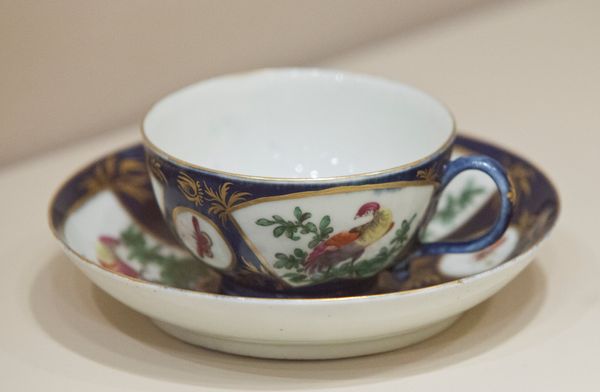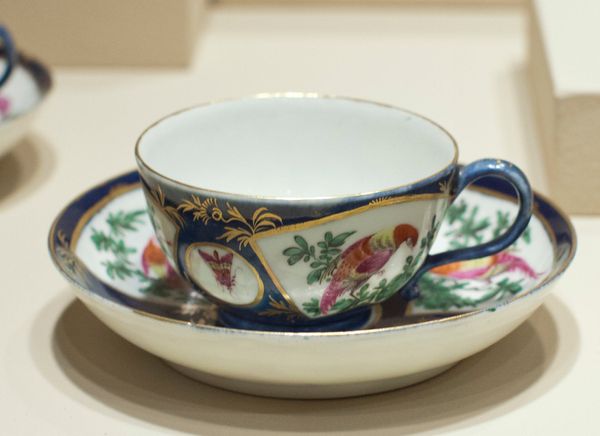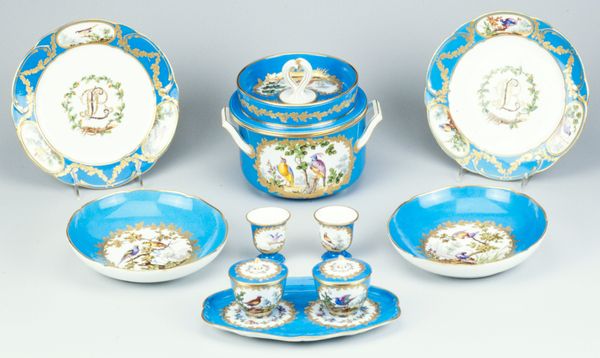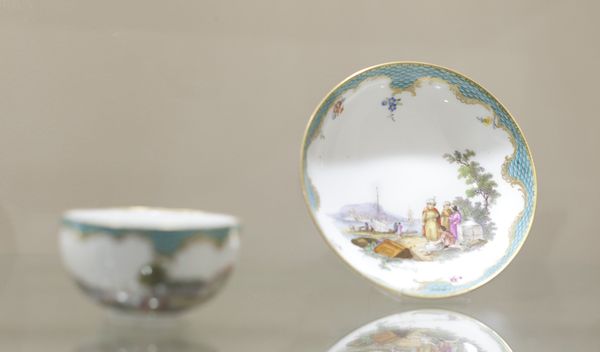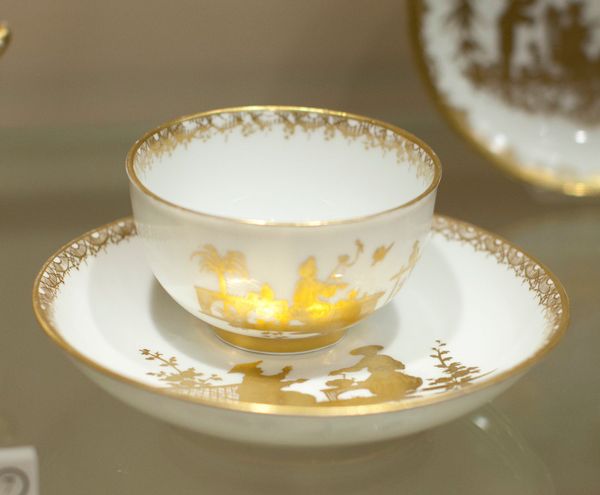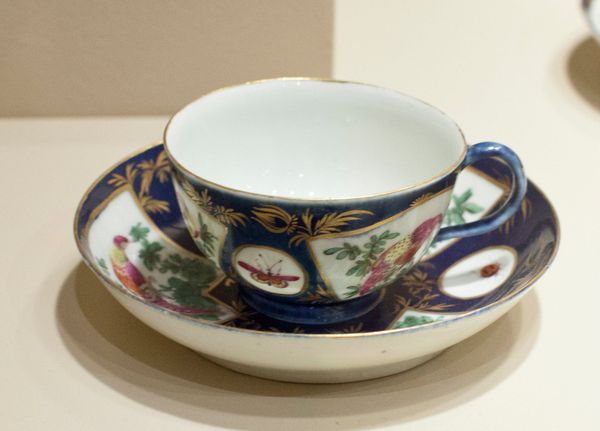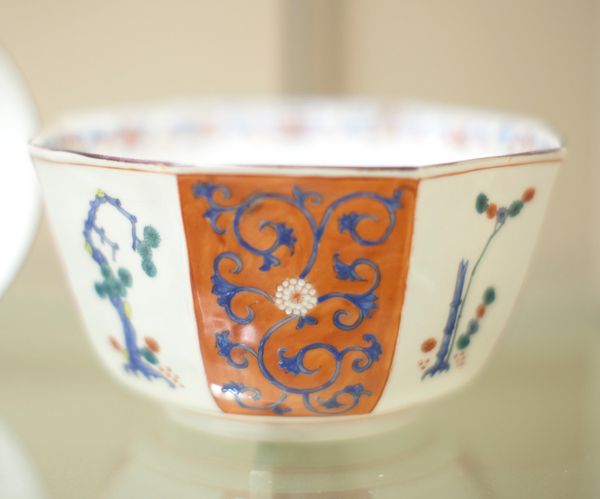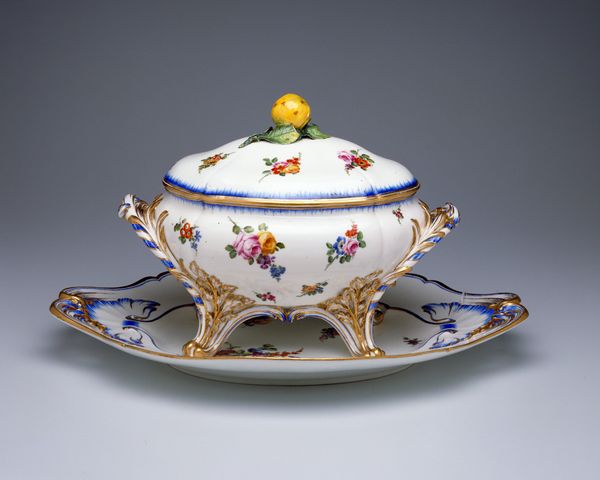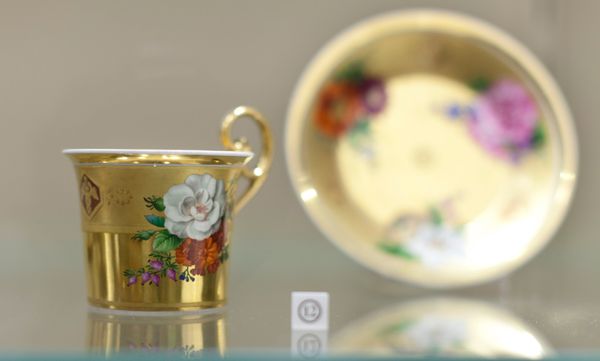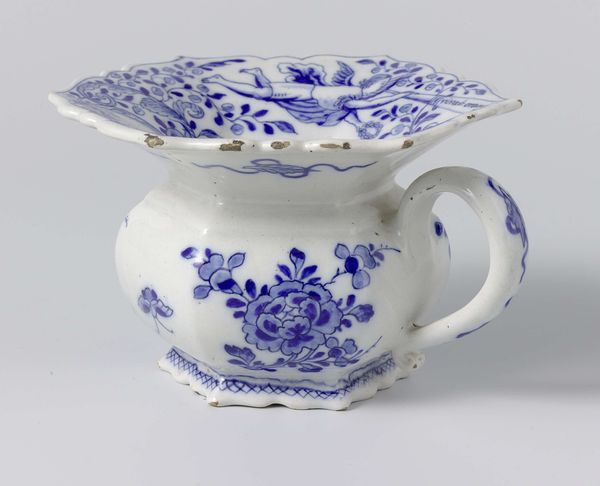
Plateau à deux pots de confiture (tray with preserve pots) 1771
0:00
0:00
Dimensions: 3 5/8 x 9 3/4 x 6 7/8 in. (9.21 x 24.77 x 17.46 cm)
Copyright: Public Domain
Curator: My first thought: charming. It's precious, almost doll-like, with that brilliant turquoise. Editor: Today, we're examining "Plateau à deux pots de confiture", or "tray with preserve pots". This Rococo confection in porcelain was created in France, dating back to around 1771. Curator: Turquoise isn't a color I'd associate with food usually, yet the birds amidst those branches, perched just so... and the gilding! There’s an undeniable sense of lightness, festivity even. It recalls imagery of idyllic courtship and pleasurable conversation. Editor: Absolutely. And you see the work involved—a ceramic object like this embodies skill. Each pot requires the clay, the forming, the firing and multiple glazes, not to mention the painting. Consider also, the materials themselves, which would have been carefully selected and costly. Labor made into a delicate container. Curator: Speaking of containers, I am struck by how this object is essentially framing something even more pleasurable—confiture! As a receptacle for preserves, it suggests a ritual, and access to sweetness itself. Beyond simply holding food, it becomes a symbol of domestic pleasure and privilege. Editor: The function really drives its entire aesthetic, doesn't it? We are drawn to the beautiful surface design, but its underlying form reveals that these delicate vessels served a practical function. Curator: Yes, its material and design speak volumes about the era. I imagine such a set being essential for elaborate teatime ceremonies. These gilded flourishes speak directly to this era, a cultural language for luxury and privilege. Editor: Precisely. Reflecting on it all, this "Plateau à deux pots de confiture” elegantly marries craftsmanship, material value, and symbolic meaning within a small, practical form. Curator: I find that looking deeper into this piece provides a brief yet potent insight into the 18th-century mindset surrounding both beauty and pleasure. It whispers of tradition and values tied up in social customs we can scarcely imagine now.
Comments
No comments
Be the first to comment and join the conversation on the ultimate creative platform.
